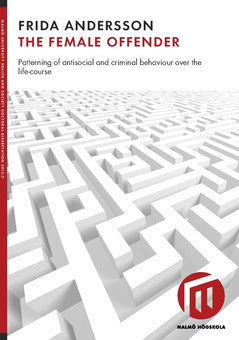
Artikeln har lagts till i varukorgen
Malmö högskola
Ny bok | Häftad
Läs mer om olika typer av bindningar här.
LEVERANS: Skickas inom 6-14 vardagar.
LEVERANS: Vi skickar din beställning med Postnords Varubrev eller DHL Servicepoint.
Du betalar alltid endast 49 kr i fraktavgift inom Sverige, oavsett vikt eller antal böcker vid beställning av antikvariska och nya böcker från oss! Läs mer
Det gick inte att ladda hämtningstillgänglighet
En julklapp? Beställ dina julklappsböcker i tid! Var vänlig och lägg märke till leveranstiden nedan. Och oavsett angiven leveranstid, på grund av osäkerhet i leveranser inför jul, rekommenderar vi att du lägger din beställning senast 10 december.
ENDAST 49 kr i fraktavgift inom Sverige, oavsett antal böcker!
Du betalar alltid endast 49 kr i fraktavgift inom Sverige, oavsett vikt eller antal böcker vid beställning av antikvariska och nya böcker från oss! Läs mer
ÅNGERRÄTT inom 14 dagar efter leverans.
RETUR & ÅNGERRÄTT: Du har alltid 14 dagars ångerrätt oavsett anledning, från den dagen du tar emot din leverans.
Skulle vår beskrivning av skicket på boken misstämma eller om vi på annat sätt gjort fel, står vi självfallet för returfrakten.
I KORTHET: Explore female criminal offending patterns and predictors over the life course, shedding light on heterogeneity and risk factors.
The female offender: Patterning of antisocial and criminal behaviour over the life-course ger en djup insikt i kvinnlig brottslighet. Du får förståelse för olika livsbanor och faktorer som påverkar kvinnors brottslighet. Boken riktar sig till forskare, studenter och alla intresserade av kriminologi. Genom att läsa den kommer du att utöka din kunskap om de unika mönstren i kvinnlig brottslighet och dess bakomliggande orsaker.
English abstract The studies included in the thesis illustrate the patterning of female offending over the life course. The overarching aim is to contribute to a better understanding of the female offender and of the heterogeneity in female criminal offending trajectories over the life course, and also of factors that differentiate between these trajectories. In order to extend the knowledge on individual predictors of female offending, the thesis analyses the correlations between offending and measures of crime propensity. Study I analyses sex differences in criminal career patterns using a group-based trajectory method. The overall conclusion is that the females in the study were much less predisposed to offend than the males, but when they did, they tended to follow a similar set of career trajectories. Four offending trajectories were identified for each sex, two sex-invariant and two sex-unique. Among both females and males, a group of Low Rate Desisters (LRD) and a group of High Level Chronics (HLC) were identified, which correspond with the groups commonly identified in earlier research focused on various cohorts. In addition, every sixth female offender was characterized as an Early Onset Desister (EOD). The offending pattern of this group was characterized by a very early onset of criminality, followed by almost no offending at all in the subsequent age categories. The second of the two female-unique patterns was denoted Adult Onset (AO). The offending pattern of this group was characterized by a late onset in crime followed by a high level of criminal activity over subsequent years. Studies II and III explore the within- and between-individual patterning of the different female offending trajectories identified in the Study I. Individual and social characteristics were investigated, along with the question of how such factors change and shape patterns of criminal involvement. Research has consistently shown that childhood risk factors appear to be important for distinguishing chronic from adolescent-limited offenders. Based on the data available to this thesis, the analyses confirm that this baseline assumption appears also to apply to females. The analyses show that it is possible on the basis of variables measuring different aspects of socio-demographic background and family functioning to separate offenders from non-offenders, and chronics from less severe offenders. Study III examines the AO group in more detail. Predictors in childhood and adolescence that are known to be related to chronic offending all produced significant effects in relation to memberships of the AO group. In addition, variables related to working class background, such as father’s occupation and coming from a family that had received social welfare payments during childhood, a low level of educational achievement and unemployment in adulthood, all seem to be related to the AO trajectory and indicate a need for further research. Studies I-III had provided indications of sex differences not only in criminal patterning but also in risk factors and life events and transitions. In Study IV, the aim was to try to identify and evaluate whether and how self-control and morality affect criminal activity for females and males respectively. Results from a split sample analysis showed that self-control was the strongest independent predictor for both sexes; further, self-control did not help explain the gender gap in offending. Overall, different aspects of morality also seemed to be powerful predictors of offending for both sexes. As regards the explanation of sex differences in offending, the impact of anticipated guilt appeared to be most important. No interaction effects were found between self-control and morality.
Bindning: Häftad. 8:o (170x240 mm)År: Utg. 2018. Omfång: 158 s. ISBN: 9789171045119. Språk: Engelska
Författare: Andersson, Frida
Titel: The female offender
Undertitel: Patterning of antisocial and criminal behaviour over the life-course
Förlag: Malmö högskola
Genre: Samhälle, politik och debatt
Artikelnr: 46231212
The female offender av Frida Andersson hittar du under genren Rättsväsen inom Samhälls- & rättsvetenskap i kategorin Politik & samhällsvetenskap. Hitta fler liknande böcker:
Hitta fler liknande böcker med dessa ämnesord:
